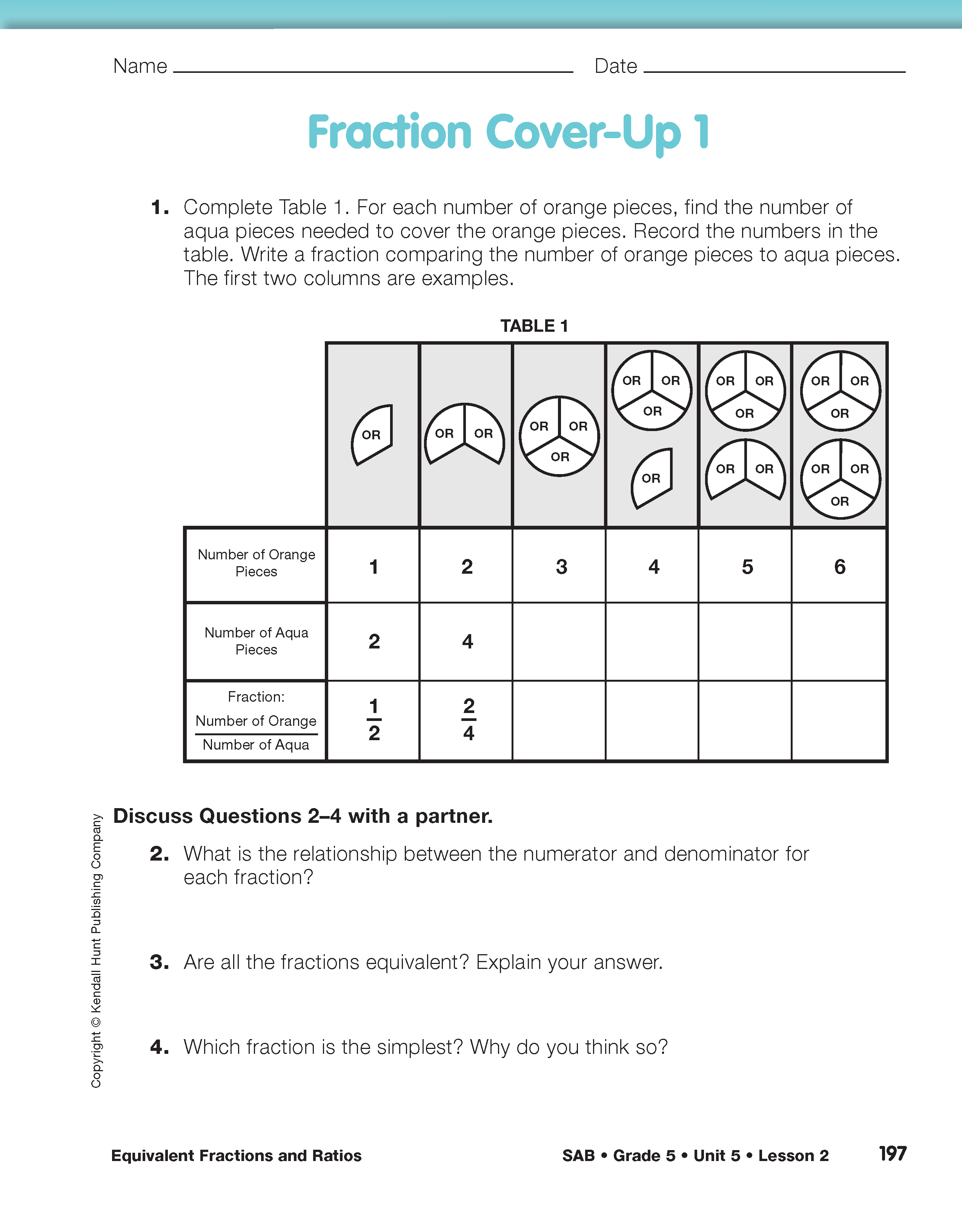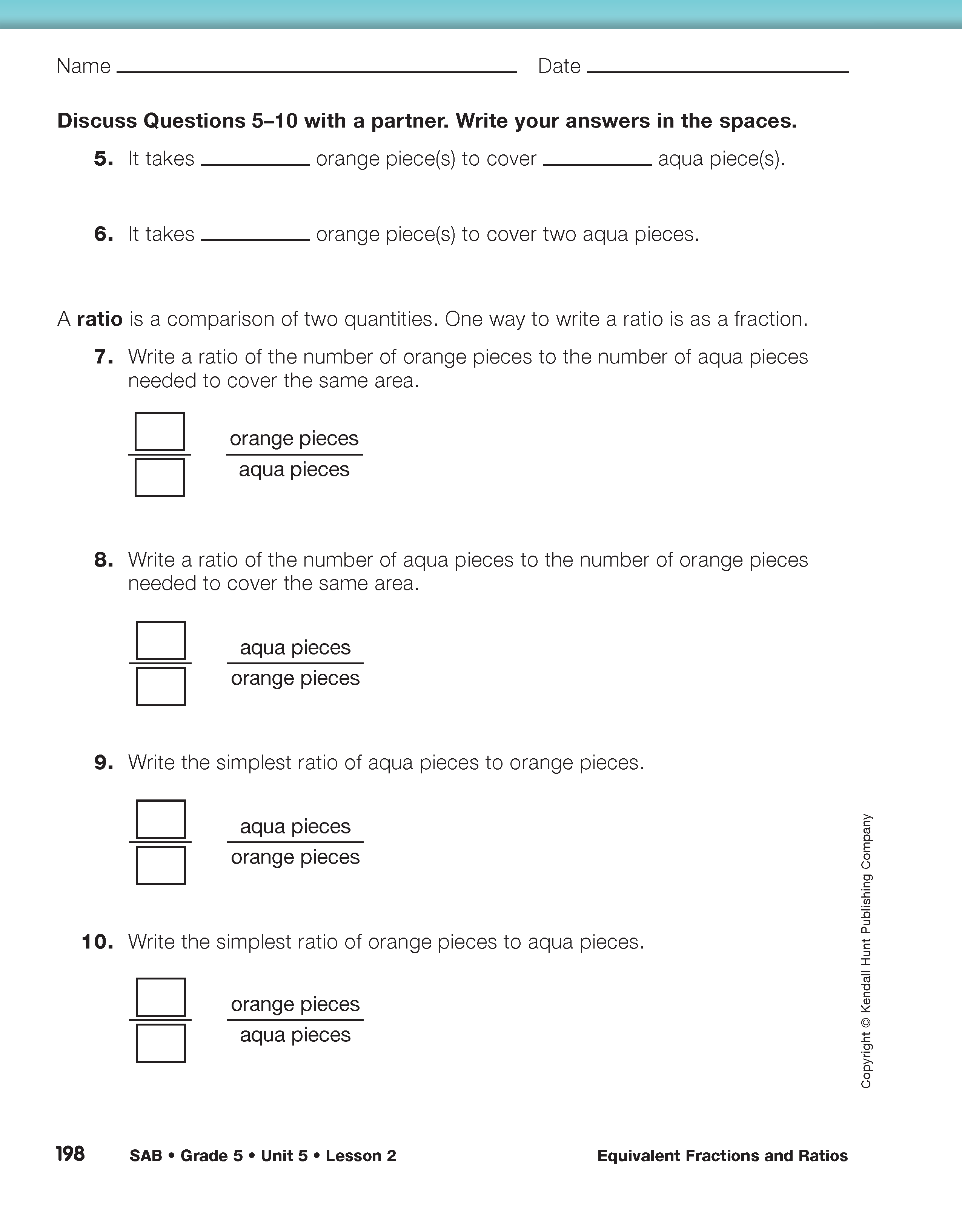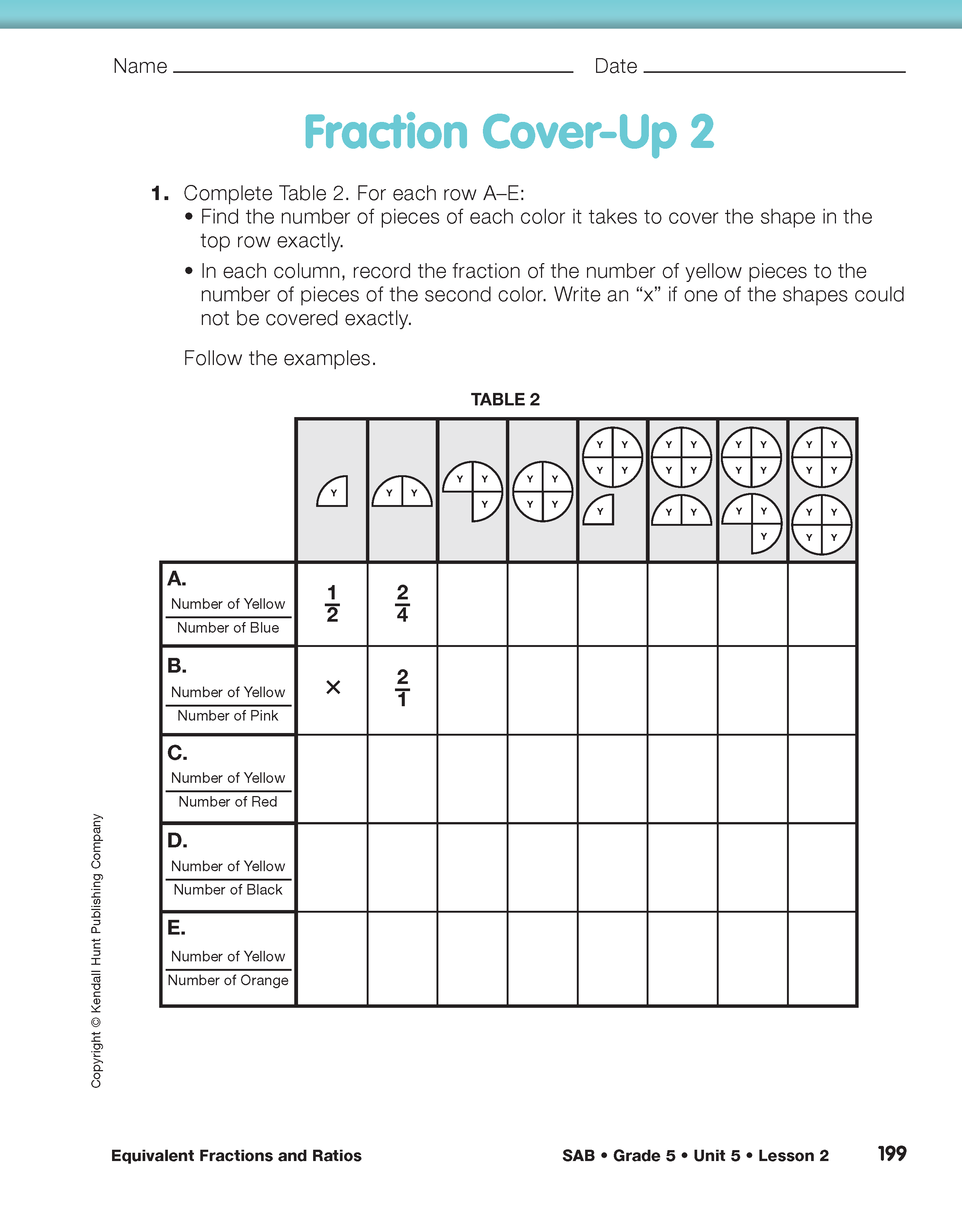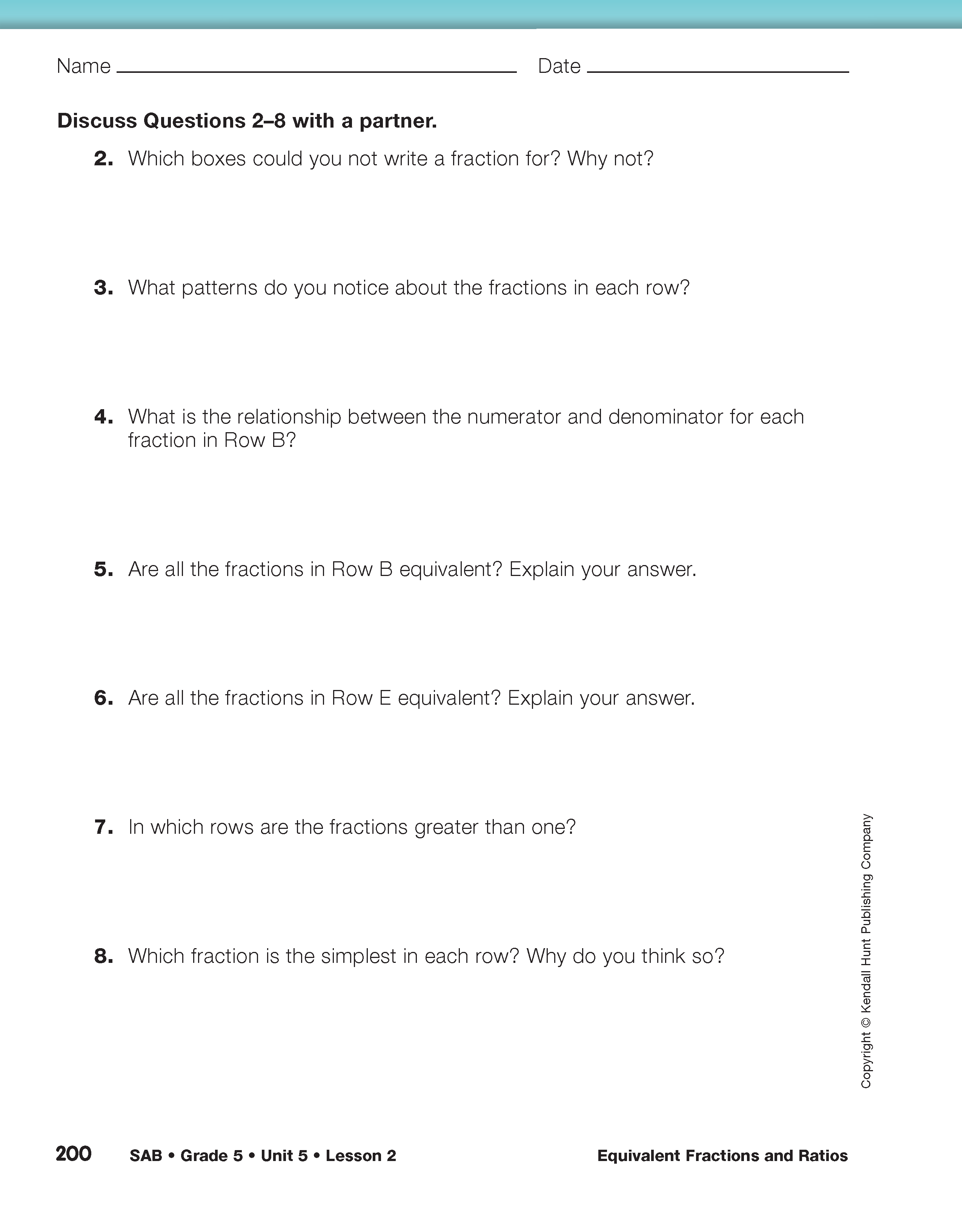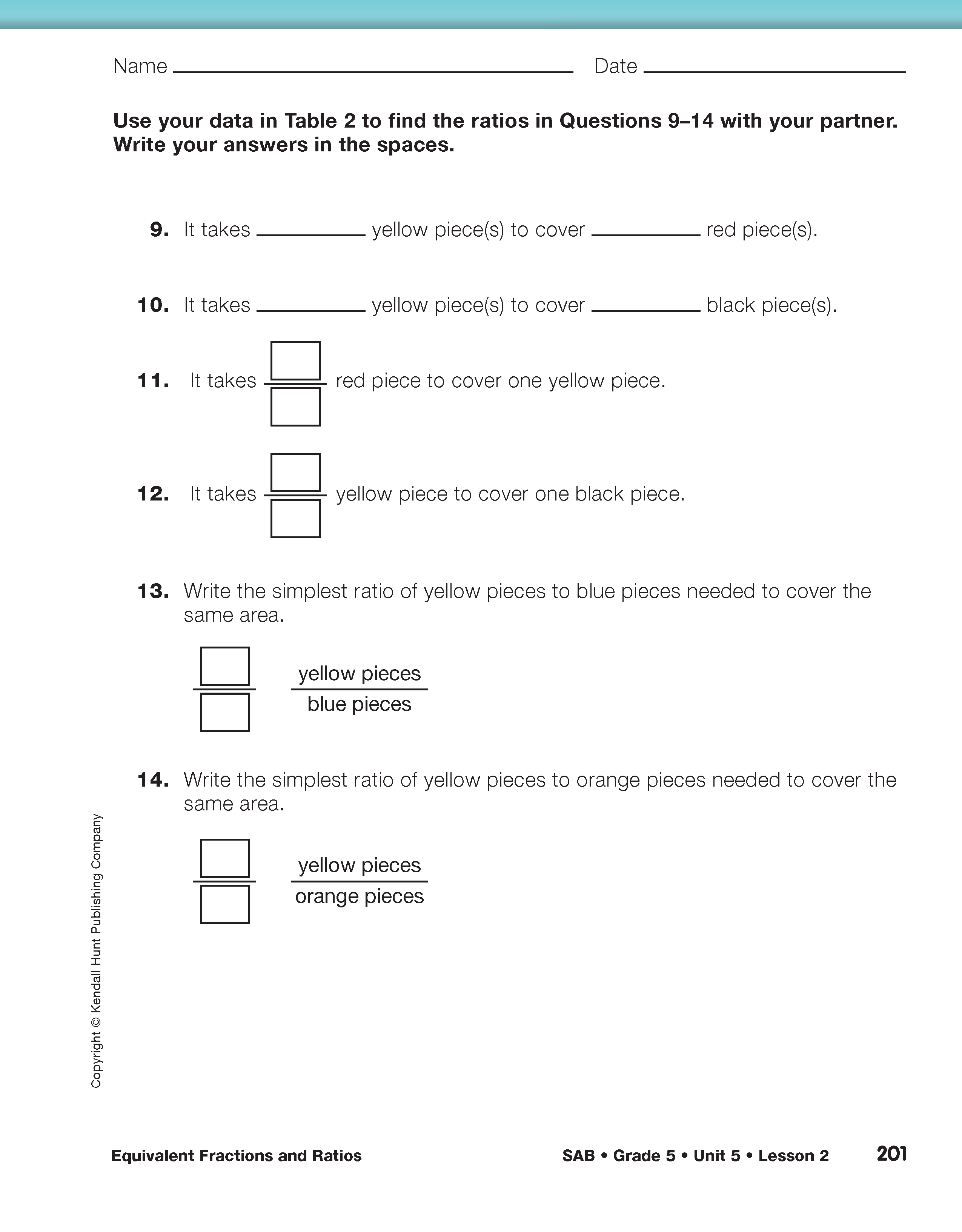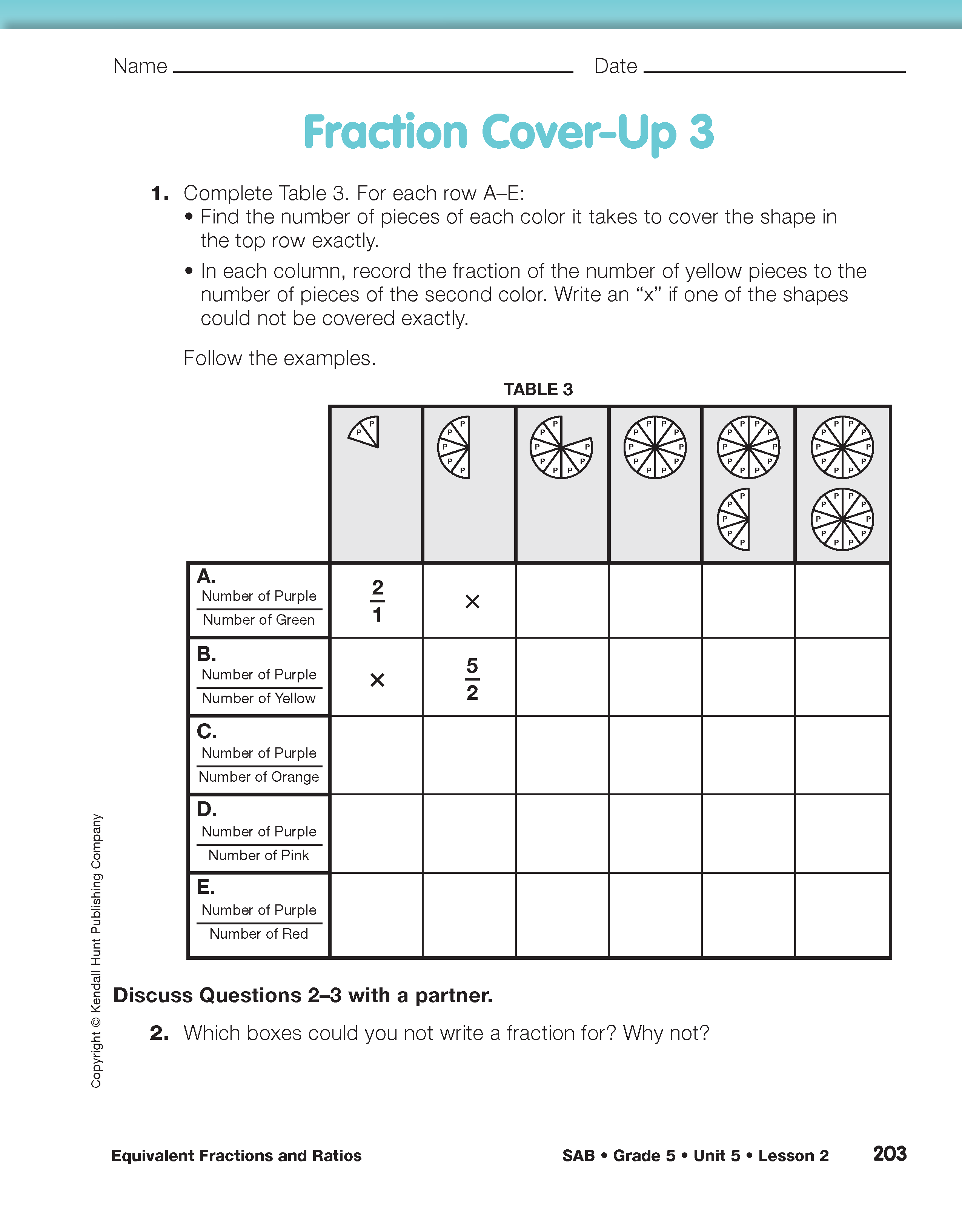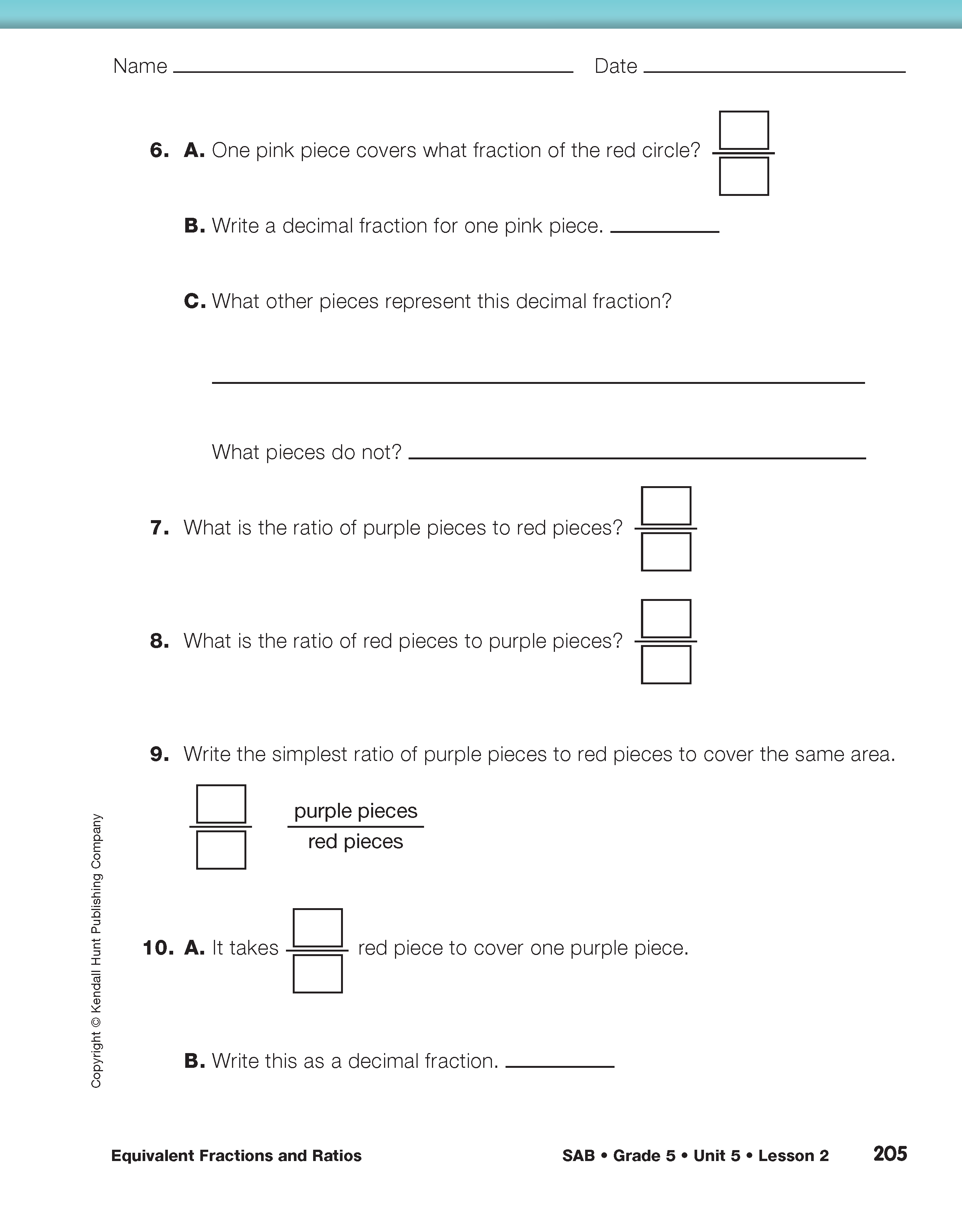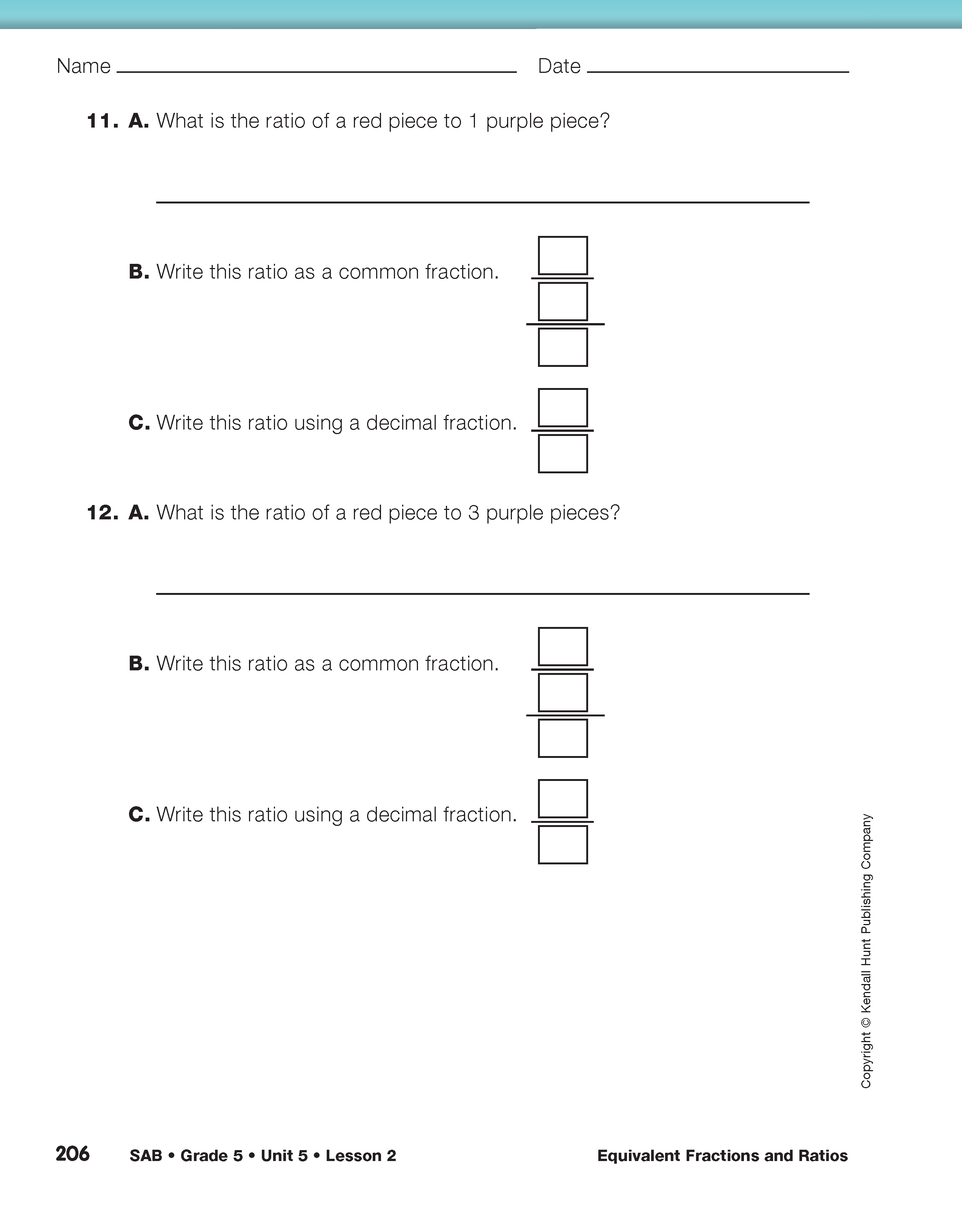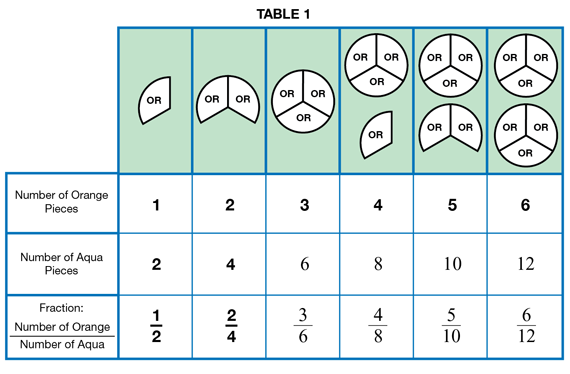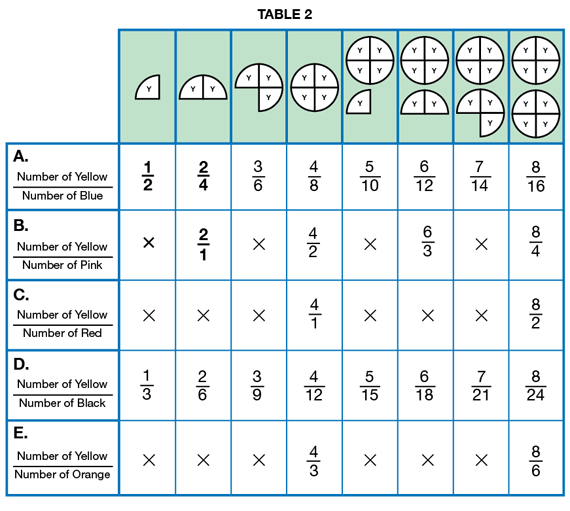Equivalent Fractions and Ratios
Est. Class Sessions: 3Developing the Lesson
Part 1: Connect Fractions to Ratios
Relate Fractional Parts to Each Other. Have students work with partners, sharing two sets of fraction circle pieces.
Ask students to use their pieces to answer the following questions:
Show students Table 1 on a display of the Fraction Cover-Up 1 page in the Student Activity Book. Read the instructions with the class. For the first two columns, ask students to verify the number of aqua pieces needed to cover the given number of orange pieces.
Ask:
Introduce Ratios. Fractions that are not part-whole may be a new concept for some students. Explain that fractions are not always a part of a unit whole. Fractions can be used to show a ratio, or a comparison of two quantities.
Ask students to complete Table 1 using orange and aqua circle pieces. See Figure 1 for a completed table. In this case, the ratios compare the number of orange pieces to the number of aqua pieces it takes to cover a shape. Have students discuss Questions 2–4 with a partner and then share responses with the whole class.
Ask:
Use Question 3 to discuss the meaning of equivalence of fractions. Ask students to justify their answers to the question by having them explain what it means for fractions to be equivalent. A more structured discussion about fraction equivalence takes place in Part 2 of this lesson.
Ask:
Identify Simplest Form. For Question 4, some students may interpret the word “simplest” in the formal sense of “lowest terms.” Some students may be unfamiliar with this definition and pick the fraction that looks the simplest.
Ask:
In Questions 5–10, students write the ratio of orange pieces to aqua pieces in three different ways. Emphasize that a ratio is a way to express a comparison of two quantities.
Ask:
Find Equivalent Ratios. Show students Table 2 on a display of the Fraction Cover-Up 2 page in the Student Activity Book. Read the instructions with the class.
Ask students to use their fraction circle pieces to verify that the example entries in Table 2 are correct.
Ask:
Ask students to work with a partner to use fraction circle pieces to fill in the table. Remind students that for several of the rows there will be boxes where fractions cannot be written. For example, in the third column of Row B, a pink piece does not evenly cover three yellow pieces. Therefore, an 'X' is placed in the box. See Figure 2.
Ask student partners to discuss Questions 2–8. The discussion of patterns and equivalence of fractions may be similar to the discussion for Fraction Cover-Up 1. In Questions 4–8, students identify when fractions will be greater than one, based on the relationships between different-colored circle pieces. Have students share responses with the whole class.
In Questions 9–14, students write ratios to compare the number of pieces of different colors needed to cover the same area. In Questions 13 and 14, students write ratios that are written as a comparison of quantities with different units. Fractions of this type are different from the whole-part fractions students worked with in Unit 2. See the Content Note.
Use Decimals to Describe Fractions and Ratios. Fraction Cover-Up 3 in the Student Activity Book provides practice for students in using decimals to describe fractional equivalents and ratios. By using the red circle as the whole, students explore the relationship of the purple pieces (tenths) to the pink pieces (halves), the orange pieces (thirds), the yellow pieces (fourths) and the green pieces (fifths).
Use of the fraction circle pieces representing fifths and tenths helps build the students' number sense of decimals to the tenths place.
Show students a display of Table 3 in the Student Activity Book. See Figure 3. Read the instructions with the class.
Ask students to use their fraction circle pieces to verify that the example entries (bolded) in Table 3 of Fraction Cover-Up 3 are correct.
Ask:
Have students work with partners, sharing two sets of fraction circle pieces. Ask students to complete Table 3 in Fraction Cover-Up 3. Have students discuss Questions 2 and 3 with a partner. Walk around the room to listen to their discussions and see how students figure out different ways to represent the decimal fractions with the fraction circle pieces.
Bring the class back together to explore Question 3A. Use a display and demonstrate or have two students demonstrate how to represent the decimal fraction 1.2 with the fraction circle pieces in more than one way. In at least one example, include the purple pieces to strengthen the students' use of tenths and the green pieces to strengthen their use of fifths. Students should be able to articulate that .2 is two-tenths (11/12) and understand that its equivalent and simplest common fraction is one fifth (1/5). Have students share their answers to Question 3B using the display.
After the class discussion, students work independently using Table 3 and the fraction circle pieces to answer Questions 4–12. These questions strengthen students' visualization of tenths expressed as decimal or common fractions and guide students in uncovering how the value of the ratio depends on whether the red piece is compared to the purple piece or the purple piece is compared to the red piece.
In Questions 11A–C, students explore the relationship between one red circle piece and 1 purple piece. Students should recognize that since it takes 10 purple pieces to cover the red circle, one tenth of the red circle is equal to 1 purple piece. To express this relationship in words, students can write one-tenth of a red piece is equal to one purple piece. For Question 11B, students express this ratio using a common fraction. Since the ratio is showing the relationship between the red piece and one purple piece, the ratio is expressed as  . In Question 11C, students express this ratio by expressing 1/10 using decimal notation (.1) in the numerator.
. In Question 11C, students express this ratio by expressing 1/10 using decimal notation (.1) in the numerator.
If students are confused by this, use these or similar prompts to increase student understanding.
Ask:













